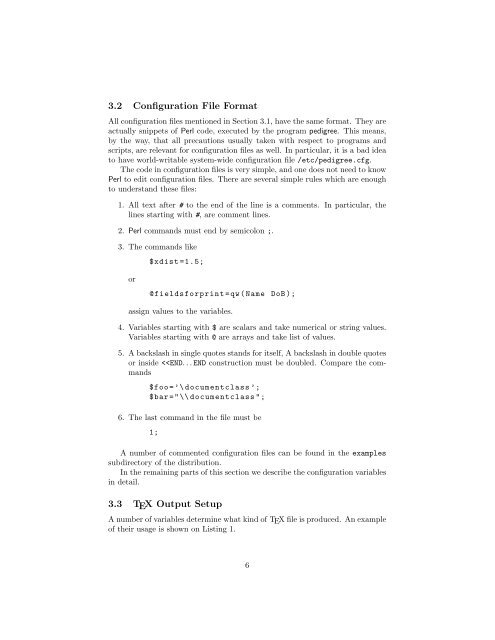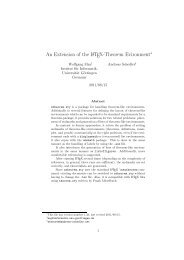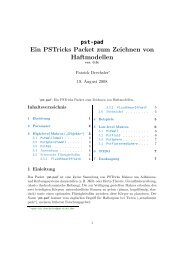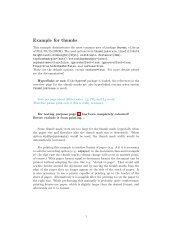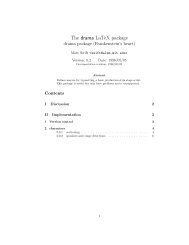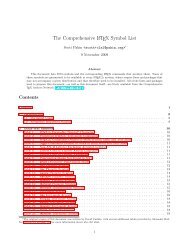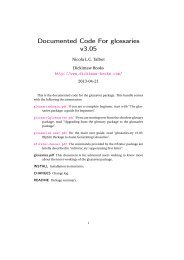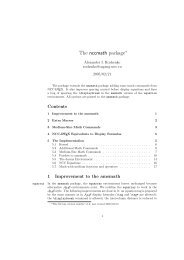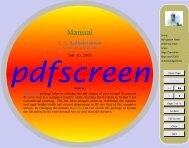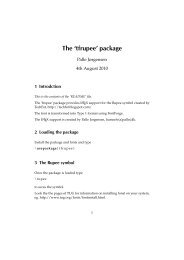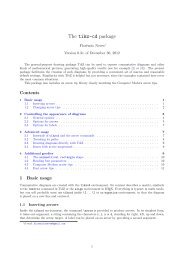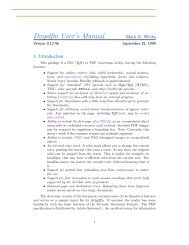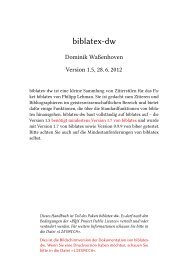pedigree.pdf. - FTP Directory Listing
pedigree.pdf. - FTP Directory Listing
pedigree.pdf. - FTP Directory Listing
You also want an ePaper? Increase the reach of your titles
YUMPU automatically turns print PDFs into web optimized ePapers that Google loves.
3.2 Configuration File Format<br />
All configuration files mentioned in Section 3.1, have the same format. They are<br />
actually snippets of Perl code, executed by the program <strong>pedigree</strong>. This means,<br />
by the way, that all precautions usually taken with respect to programs and<br />
scripts, are relevant for configuration files as well. In particular, it is a bad idea<br />
to have world-writable system-wide configuration file /etc/<strong>pedigree</strong>.cfg.<br />
The code in configuration files is very simple, and one does not need to know<br />
Perl to edit configuration files. There are several simple rules which are enough<br />
to understand these files:<br />
1. All text after # to the end of the line is a comments. In particular, the<br />
lines starting with #, are comment lines.<br />
2. Perl commands must end by semicolon ;.<br />
3. The commands like<br />
or<br />
$xdist=1.5;<br />
@fieldsforprint=qw(Name DoB);<br />
assign values to the variables.<br />
4. Variables starting with $ are scalars and take numerical or string values.<br />
Variables starting with @ are arrays and take list of values.<br />
5. A backslash in single quotes stands for itself, A backslash in double quotes<br />
or inside


